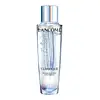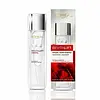What's inside
What's inside
 Key Ingredients
Key Ingredients

 Benefits
Benefits

 Concerns
Concerns

 Ingredients Side-by-side
Ingredients Side-by-side

Water
Skin ConditioningAlcohol
AntimicrobialGlycolic Acid
BufferingButylene Glycol
HumectantIsononyl Isononanoate
EmollientDipropylene Glycol
HumectantSodium Hydroxide
BufferingAnanas Sativus Fruit Extract
Skin ConditioningAscorbyl Glucoside
AntioxidantTocopherol
AntioxidantFaex Extract
Skin ConditioningFagus Sylvatica Bud Extract
TonicArginine
MaskingPEG-32
HumectantTrisodium Ethylenediamine Disuccinate
Helianthus Annuus Seed Oil
EmollientSalicylic Acid
MaskingPentylene Glycol
Skin ConditioningBenzoic Acid
MaskingPropanediol
SolventCaprylyl Glycol
EmollientPapain
Skin ConditioningSorbic Acid
PreservativeRosa Damascena Flower Water
MaskingRosa Damascena Flower Oil
MaskingRosmarinus Officinalis Extract
AntimicrobialRose Extract
Skin ConditioningVitis Vinifera Seed Oil
EmollientCitric Acid
BufferingWater, Alcohol, Glycolic Acid, Butylene Glycol, Isononyl Isononanoate, Dipropylene Glycol, Sodium Hydroxide, Ananas Sativus Fruit Extract, Ascorbyl Glucoside, Tocopherol, Faex Extract, Fagus Sylvatica Bud Extract, Arginine, PEG-32, Trisodium Ethylenediamine Disuccinate, Helianthus Annuus Seed Oil, Salicylic Acid, Pentylene Glycol, Benzoic Acid, Propanediol, Caprylyl Glycol, Papain, Sorbic Acid, Rosa Damascena Flower Water, Rosa Damascena Flower Oil, Rosmarinus Officinalis Extract, Rose Extract, Vitis Vinifera Seed Oil, Citric Acid
Water
Skin ConditioningButylene Glycol
HumectantAlcohol
AntimicrobialHydroxyethylpiperazine Ethane Sulfonic Acid
BufferingPropanediol
SolventPPG-6-Decyltetradeceth-30
EmulsifyingCaprylyl Glycol
EmollientSalicylic Acid
MaskingSodium Hydroxide
BufferingP-Anisic Acid
MaskingAdenosine
Skin ConditioningCapryloyl Salicylic Acid
ExfoliatingAcetyl Trifluoromethylphenyl Valylglycine
Skin ConditioningDisodium EDTA
Parfum
MaskingMadecassoside
AntioxidantBenzyl Salicylate
PerfumingLimonene
PerfumingLinalool
PerfumingBenzyl Alcohol
PerfumingPentylene Glycol
Skin ConditioningYeast Extract
Skin ConditioningTocopherol
AntioxidantWater, Butylene Glycol, Alcohol, Hydroxyethylpiperazine Ethane Sulfonic Acid, Propanediol, PPG-6-Decyltetradeceth-30, Caprylyl Glycol, Salicylic Acid, Sodium Hydroxide, P-Anisic Acid, Adenosine, Capryloyl Salicylic Acid, Acetyl Trifluoromethylphenyl Valylglycine, Disodium EDTA, Parfum, Madecassoside, Benzyl Salicylate, Limonene, Linalool, Benzyl Alcohol, Pentylene Glycol, Yeast Extract, Tocopherol
 Reviews
Reviews

Ingredients Explained
These ingredients are found in both products.
Ingredients higher up in an ingredient list are typically present in a larger amount.
Alcohol comes in many different forms. Different types of alcohol will have different effects on skin. This ingredient is usually an astringent alcohol.
These alcohols are drying on the skin. They may strip away your skin's natural oils and even damage your skin barrier. Astringent alcohols may also irritate skin.
Other types of astringent alcohols include:
According to the National Rosacea Society based in the US, you should be mindful of products with these alcohols in the top half of ingredients.
Any type of sanitizing product will have high amounts of alcohol to help kill bacteria and viruses.
Fatty alcohols come from plant oils such as coconut oil. These can help hydrate the skin and are non-irritating. Some fatty alcohols include cetyl and stearyl alcohol.
Learn more about AlcoholButylene Glycol (or BG) is used within cosmetic products for a few different reasons:
Overall, Butylene Glycol is a safe and well-rounded ingredient that works well with other ingredients.
Though this ingredient works well with most skin types, some people with sensitive skin may experience a reaction such as allergic rashes, closed comedones, or itchiness.
Learn more about Butylene GlycolCaprylyl Glycol is a humectant and emollient, meaning it attracts and preserves moisture.
It is a common ingredient in many products, especially those designed to hydrate skin. The primary benefits are retaining moisture, skin softening, and promoting a healthy skin barrier.
Though Caprylyl Glycol is an alcohol derived from fatty acids, it is not the kind that can dry out skin.
This ingredient is also used as a preservative to extend the life of products. It has slight antimicrobial properties.
Learn more about Caprylyl GlycolPentylene glycol is typically used within a product to thicken it. It also adds a smooth, soft, and moisturizing feel to the product. It is naturally found in plants such as sugar beets.
The hydrophilic trait of Pentylene Glycol makes it a humectant. As a humectant, Pentylene Glycol helps draw moisture from the air to your skin. This can help keep your skin hydrated.
This property also makes Pentylene Glycol a great texture enhancer. It can also help thicken or stabilize a product.
Pentylene Glycol also acts as a mild preservative and helps to keep a product microbe-free.
Some people may experience mild eye and skin irritation from Pentylene Glycol. We always recommend speaking with a professional about using this ingredient in your routine.
Pentylene Glycol has a low molecular weight and is part of the 1,2-glycol family.
Learn more about Pentylene GlycolPropanediol is an all-star ingredient. It softens, hydrates, and smooths the skin.
It’s often used to:
Propanediol is not likely to cause sensitivity and considered safe to use. It is derived from corn or petroleum with a clear color and no scent.
Learn more about PropanediolSalicylic Acid (also known as beta hydroxy acid or BHA) is a well-known ingredient for treating skin that struggles with acne and clogged pores. It exfoliates both the skin's surface and deep within the pores to help clear out buildup, control oil, and reduce inflammation.
Unlike AHAs (alpha hydroxy acids), salicylic acid is oil-soluble. This allows it to penetrate into pores which makes it especially effective for treating blackheads and preventing future breakouts.
Salicylic acid is also known for its soothing properties. It has a similar structure to aspirin and can calm inflamed or irritated skin, making it a good option for acne-prone skin that is also sensitive.
Concentrations of 0.5-2% are recognized by the U.S. FDA as an over-the-counter topical acne product.
It can cause irritation and/or dryness if one's skin already has a compromised moisture barrier, so it's best to focus on repairing that before introducing this ingredient into your routine.
While salicylic acid does not increase sun sensitivity, it’s still important to wear sunscreen daily to protect your skin.
If you are looking for the ingredient called BHA or Butylated Hydroxyanisole, click here.
Learn more about Salicylic AcidSodium Hydroxide is also known as lye or caustic soda. It is used to adjust the pH of products; many ingredients require a specific pH to be effective.
In small amounts, sodium hydroxide is considered safe to use. However, large amounts may cause chemical burns due to its high alkaline.
Your skin has a natural pH and acid mantle. This acid mantle helps prevent harmful bacteria from breaking through. The acid mantle also helps keep your skin hydrated.
"Alkaline" refers to a high pH level. A low pH level would be considered acidic.
Learn more about Sodium HydroxideTocopherol (also known as Vitamin E) is a common antioxidant used to help protect the skin from free-radicals and strengthen the skin barrier. It's also fat soluble - this means our skin is great at absorbing it.
Vitamin E also helps keep your natural skin lipids healthy. Your lipid skin barrier naturally consists of lipids, ceramides, and fatty acids. Vitamin E offers extra protection for your skin’s lipid barrier, keeping your skin healthy and nourished.
Another benefit is a bit of UV protection. Vitamin E helps reduce the damage caused by UVB rays. (It should not replace your sunscreen). Combining it with Vitamin C can decrease sunburned cells and hyperpigmentation after UV exposure.
You might have noticed Vitamin E + C often paired together. This is because it is great at stabilizing Vitamin C. Using the two together helps increase the effectiveness of both ingredients.
There are often claims that Vitamin E can reduce/prevent scarring, but these claims haven't been confirmed by scientific research.
Learn more about TocopherolWater. It's the most common cosmetic ingredient of all. You'll usually see it at the top of ingredient lists, meaning that it makes up the largest part of the product.
So why is it so popular? Water most often acts as a solvent - this means that it helps dissolve other ingredients into the formulation.
You'll also recognize water as that liquid we all need to stay alive. If you see this, drink a glass of water. Stay hydrated!
Learn more about Water